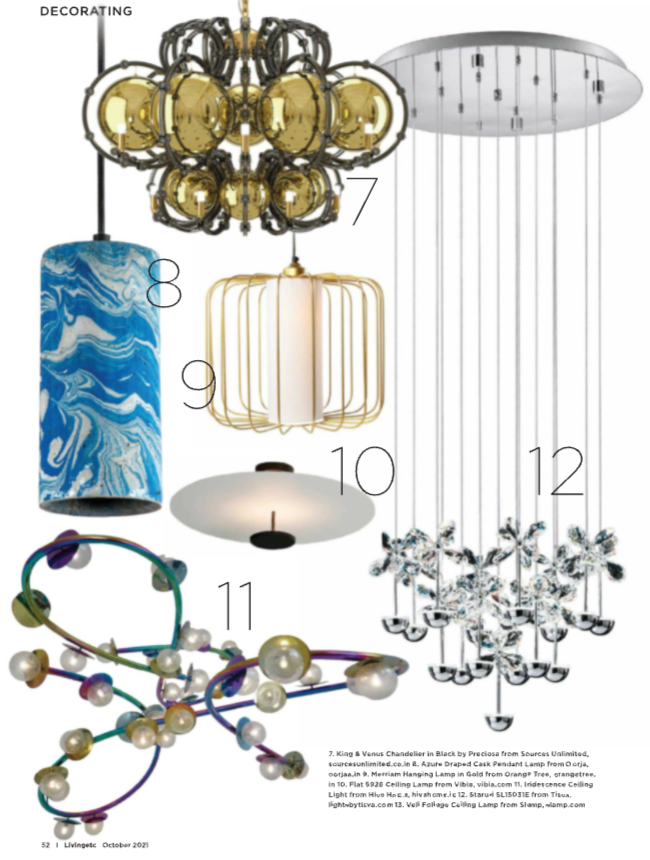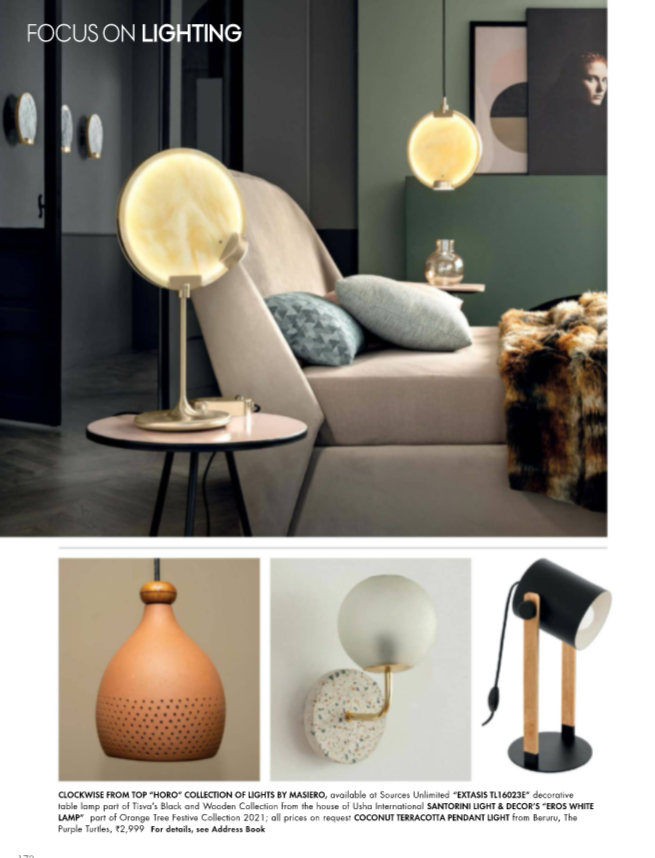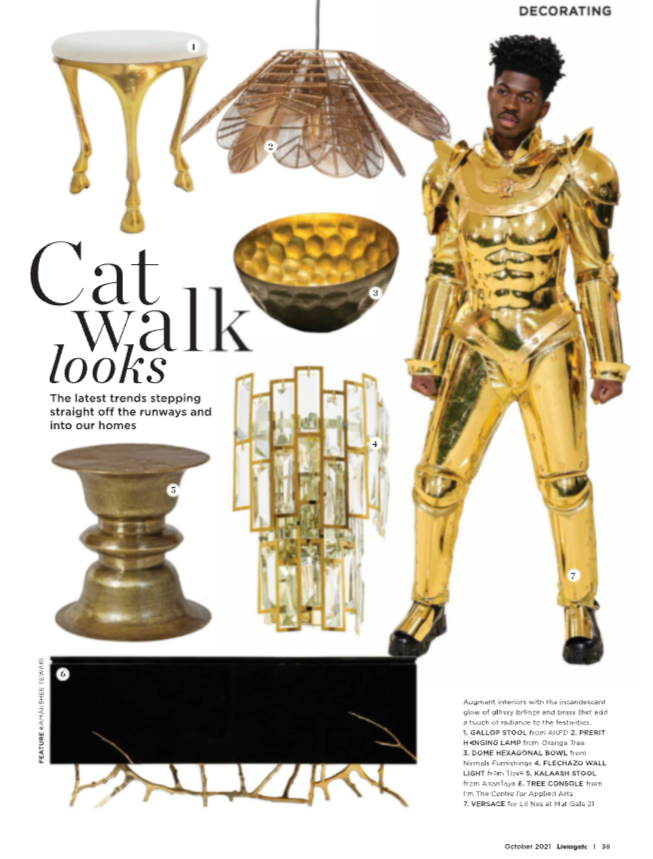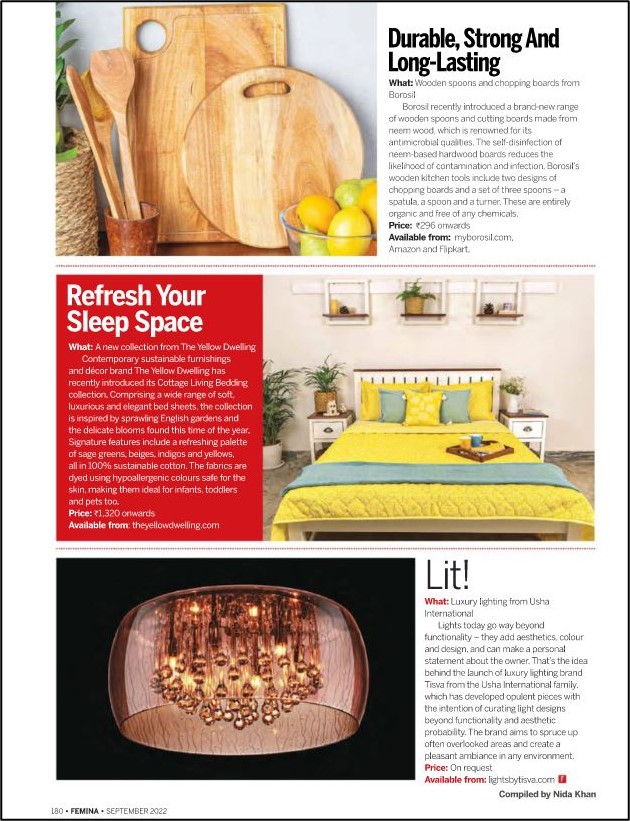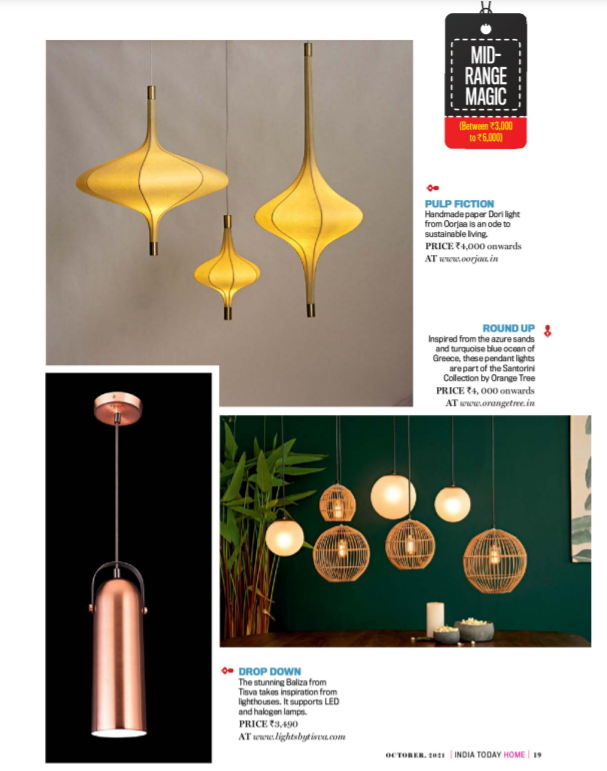Colour is not a physical property of the objects we see, but the light that is reflected back by the surface/object.
Colour results from light waves bouncing off an object; in the case of transparent or semi-transparent objects it would result from light waves passing through it. Therefore the material of the object/surface determines the colour.
An object that is yellow is yellow because it absorbs all colours and reflects back only the yellow colour. In the case of a transparent object such as Green Glass, it absorbs all colours and only allows/transmits the green colour to pass by. If an object reflects back all colours in equal proportions it will appear to be white or neutral Grey. In most cases objects reflect back more than one colour, in such cases the reflected colours will combine to form the colour we see. Butter for example absorbs Blue light and reflects back all colours, which combine to give a yellowish hue to butter.
Now, let us get a little technical, colours we know are made of various wavelengths of light. These wavelengths of light are measured in nanometers. (A Nanometer (Nm) is one billionth of a meter.) Thus Green Lettuce looks green because it absorbs all wavelengths and reflects back the light waves that are between 500-600 Nm wavelengths, which happen to be the wavelength for the colour Green. Similarly a Tomato will absorb all visible energy (visible light wavelengths) except for 610 nm wavelength, which is the colour of red.
All ‘White’ light sources give out light waves of all wavelengths, but not always in the same proportion. Almost all such sources of white light are deficient or lack a few of the wavelengths that make up the complete colour spectrum. This in turn influences the way we see colour under the concerned light source. This effect is known as Colour Rendition. It causes some colours to look a bit grey and other to look more vivid, depending on the proportion of the missing wavelength and the wavelength that may have been emitted at a higher proportion. To get the accurate colour of an object the light source needs to emit the right amount of the wavelength that the object in question reflects.
For example a tomato under a white light source (which contains the red wavelength) will look its natural colour – red. Now, if we light up the tomato with a Green light, it will appear dark grey because there is no red light for it to reflect back.
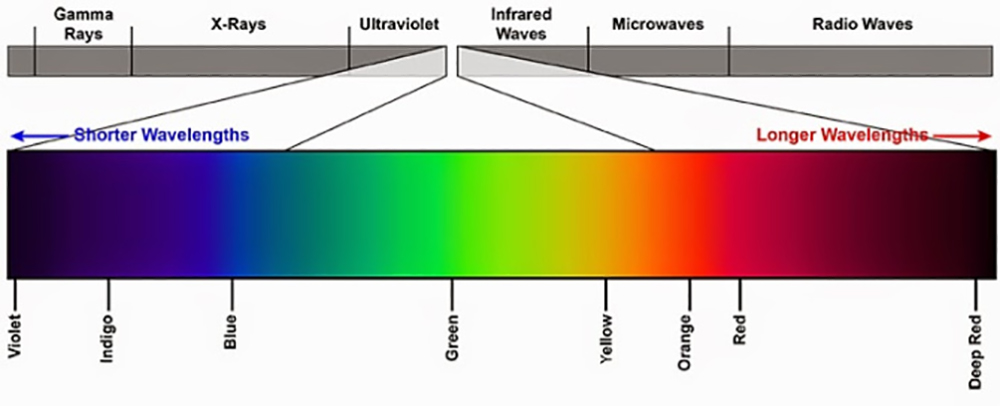
Since all white light sources emit wavelengths in different proportions, ‘white’ in lighting becomes a broad category. The most common variation in this category is ‘warm’ and ‘cool’ light. Warm white light emits larger number of long light-waves that are towards the higher (nm) end of the colour spectrum from yellow to orange and red. While Cool white light emits more of the shorter waves that are towards the lower end of the colour spectrum from blue through green to yellow.
The Sun emits warm white light, others examples being light emitted by Incandescent bulbs, tungsten-halogen lamps and high pressure sodium lamps. Examples of Cool white light are fluorescent and metal halide lights.
Colour Temperature
Colour Temperature is used to describe how a lamp (light source) appears when lighted. The rating unit used is Kelvin (k). Colour temperature doesn’t refer to how hot or cold the surface of a light source becomes when lit. Instead it measures what kind of light a lamp source emits, in different temperature.
Incandescent lamps closely resemble the Blackbody Rod as they emit the complete spectrum of visible light. Whereas Fluorescent and High-intensity discharge lamp do not emit the complete spectrum of visible light. Hence, Kelvin can be used to measure the color temperature of the former and not of the latter. Correlated Colour Temperature (CCT) is used to describe colour temperature of lamps with incomplete spectrums. The general Incandescent lamp has a colour temperature between 2600K and 3100K. Fluorescent lamps have a CCT between 2700K and 7500K.
Picture an iron rod at room temperature, it doesn’t emit any light. However when we heat the iron rod to a certain point, it will begin to glow red. As an iron rod will melt beyond that temperature, Physicists use an imaginary object called Blackbody Radiator to measure Color temperature. The Blackbody Radiator emits Red light when heated to 800K, yellowish white at 2800 K, daylight white at 8000K, brilliant Blue at 60,000K.
Colour Rendering
To overcome the limitation of Colour Temperature across various types of light sources, Color Rendering is used. Colour Redering expresses how colours appear under a given light source. The rating system used for this purpose is called Colour Rendering Index (CRI). Basically good Colour Rendering can be interpreted, as familiar colour on familiar objects.
Since CRI varies with colour temperature it can only compare lamps that have a similar range of colour temperature (in-between 100K to 300 K). And because R (CRI) measures the emitted light as a whole, it doesn’t take into account the individual waves of the light source. Thus it is possible for a few light sources with similar R values to emit the same wavelengths in varying proportions. This in turn alters how we perceive colour, for example Incandescent lamps which emit more Red wavelengths, give people a healthy or tanned look (to their skin), whereas Fluorescent lamps which emit a higher proportion of yellow or blue waves, give the skin a pale look.
CRI first measures the colour temperature or CCT of the given colour and then compares it with a reference – the usual reference being the Blackbody Rod. The result is expressed with a R factor on a scale of 1 to 100. R indicates how closely the light source being measured resembles the reference source’s colour temperature.
Subjective Impressions
The colour of light has a profound effect on our subjective impression of the environment around us. With warmer light being more desirable for low luminance, for example a few lighted candles will make a room seem pleasant, now if we were to use the same amount of daylight to light the exact same room, we will perceive it as dark and dingy.
Just as warm light gives us impressions of cozy and friendliness, cool light impresses us with neatness and efficiency. Diffuse light plus warm hues (orange-red), intensifies impressions of anxiety and tension; and diffuse light plus cool hues (violet-blue), gives us the impression of somberness/gloomy (the impression of gloom increases with a decrease in luminance). Similarly sparkles and warm hues give us impression of playfulness and sparkles with cool hues create an atmosphere of enchantment.
Surface Finishes and Colour of Light
We now know that objects do not have colour of their own and that colours will appear differently under varying sources of light. So it is advisable to take this point into consideration while designing an interior space. If you are undecided on your lighting design you could test your surfaces and materials under two different light sources –one predominantly blue (cool) and the other predominantly red (warm.)
Incandescent Sources
Incandescent lamps emit small quantities of deep-blue light, going up the spectrum to emit higher proportions of deep-red waves. Though the colour of this warm light is white, it emits higher proportions of red and yellow light. Since they are deficient in Blue and Green light, these colours appear slightly grey. On the other hand it complements warm colours and human faces.
As these lights have been the longest among us (being the first to be invented) and they emit light through heat – same as our other sources of light such as the sun and fire – human beings are more familiar with colours under them and hence their Colour Rendering Index is high. All Incandescent and Tungsten-Halogen lamps are given a CRI of 100.
Tungsten-Halogen lamps emit comparatively more blue waves and less red waves; they appear whiter than the yellowish standard Incandescent lamps.
Fluorescent Sources
Fluorescent lamps emit a discontinuous or broken spectrum of light. Variation in the composition of Phosphors that coat the inside of the lamp is responsible for the broken spectrum, where light waves peak at certain points of the spectrum. As such these lamps produce three different colour temperatures: 1. Warm (3000k): These are compatible with Incandescent lamps, emitting a similar spectrum of colour. 2. Cool (4100k): These are compatible with daylight. 3. 3500K Lamps: These are compatible with both daylight and Incandescent lamps.
Triphosphor RE-70 works under the theory that the human eye reacts to only three prime colours blue-violet, green and orange-red. And therefore emits light containing wavelengths of these three prime colours. This results in more colourful interiors, by increasing the colour contrast.
These lamps further fall into three groups in regard to their efficacy (capacity to produce light) and colour rendition: Standard, Deluxe and Rare-Earth. The standard white lamps (both cool and warm) produce high efficacy and poor colour rendition. Warm white Fluorescent lamps have a CRI of 52 to 53 and the cool ones of 60 to 62 CRI.
Deluxe Fluorescent lamps have better colour rendition but at the expense of efficacy, which falls by 25%. However since colours appear more vivid and accurate under better CRI (84 to 90 CRI), the difference in efficacy is not noticeable.
Rare-Earth lamps have both high colour rendition and high efficacy. There are three kinds of Rare-Earth lamps: Triphosphor RE-70, Triphosphor RE-80 and Quad-Phosphor RE-90.
Besides using conventional Phosphor coating the Triphosphor RE-80, also contains narrow-emission rare-earth Phosphor. These have a CRI of 80 to 86. On the other hand Quad-Phosphor RE-90 contains four wide-emissions Phosphor and has a CRI of 90 to 95, making them the highest CRI rated Fluorescent lamps.
High Intensity Discharge (HID) Sources
Like Fluorescent lamps, HID lamps emit a discontinuous spectrum of light. The various metals present in the HID, give them varying colour rendering abilities. The presence of sodium in HID lamps will give it a yellow light; while mercury will make it appear blue. (This is the same as throwing salt in fire, where the sodium in the salt burns to give the fire a yellow hue and mercury when thrown into fire will give it a blue hue.)
High Pressure Sodium Lights, thus emit a yellow light. These have a CRI of 21 to 22 and cause most colours- red, blue, green and violet – to be muted. If one were to increase the gas pressure inside the sodium lamp it will give out yellowish light like the Incandescent lamps. These very high pressure Sodium lamps have a CRI of 85.
Low pressure Sodium Lamps only emit wavelengths of 589nm (meaning they only reflect the one colour that is emitted at 589 nm). All objects thus, appear grey under these light sources; with Low pressure Sodium Lamps having a CRI of 0.
Clear Mercury Vapour Lamp emits a cool light which is predominantly blue and green. A lack of red gives it poor colour rendering and people appear ghastly and pale under them. They have a CRI of 15 to 20. Coating the inside of a Mercury lamp with Phosphor will give it better colour rendering (as phosphor turns invisible ultraviolet light waves into visible light) but poor efficacy. Such Phosphor coated Mercury lamps have a CRI of 45 to 50.
Mercury Halide Lamps are similar to Mercury Vapour lamps, except that the various added metal halides (halides are compounds of metal with bromine or iodine) in the former give it better colour rendering abilities. These halides, add missing wavelengths of light yielding a more uniform colour spectrum. But even then the red colour is slightly muted. These lamps generally have a CRI of 65 to 70. Such lamps are known to emit inconsistent colours from lamp to lamp and also may experience colour shifts over the lamp’s lifetime.
New Ceramic Halide Lamps combine the ceramic arc tube technology of the high pressure sodium lamps with the chemistry of metal halides. The ceramic stops both inconsistencies of colours across lamps and shifts in lamp colour over its life span. Also since ceramic allows it to withstand higher temperature, the colour rendering of these lamps are better at 85 CRI. These are the best HID lamps in terms of colour rendering.
As such a ‘best’ colour lamp is non-existent, but dependent on other factors from colour rendering, environment, efficacy, absence of glare, familiarity and so on.


